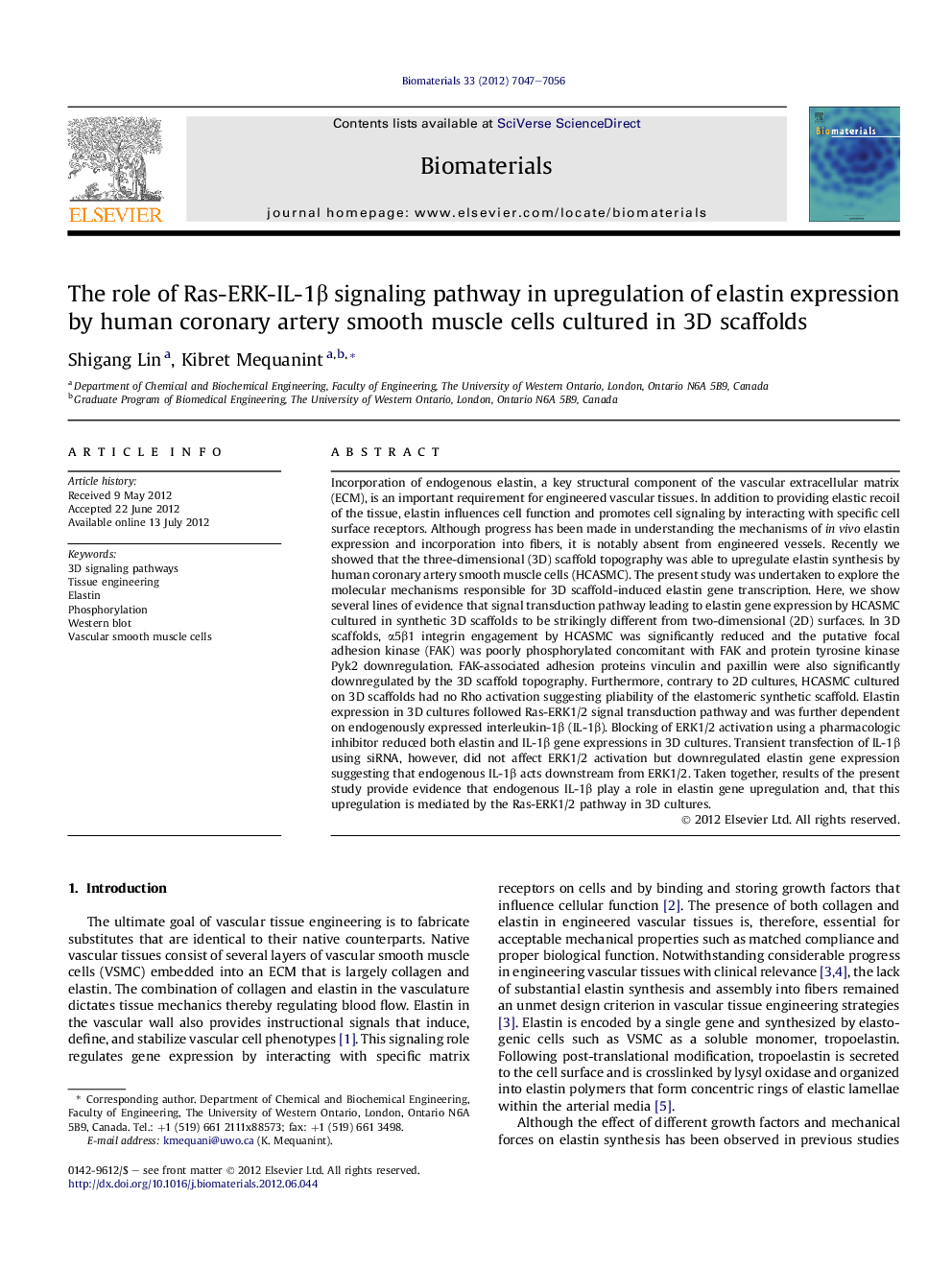| کد مقاله | کد نشریه | سال انتشار | مقاله انگلیسی | نسخه تمام متن |
|---|---|---|---|---|
| 10228790 | 496 | 2012 | 10 صفحه PDF | دانلود رایگان |
عنوان انگلیسی مقاله ISI
The role of Ras-ERK-IL-1β signaling pathway in upregulation of elastin expression by human coronary artery smooth muscle cells cultured in 3D scaffolds
دانلود مقاله + سفارش ترجمه
دانلود مقاله ISI انگلیسی
رایگان برای ایرانیان
کلمات کلیدی
موضوعات مرتبط
مهندسی و علوم پایه
مهندسی شیمی
بیو مهندسی (مهندسی زیستی)
پیش نمایش صفحه اول مقاله

چکیده انگلیسی
Incorporation of endogenous elastin, a key structural component of the vascular extracellular matrix (ECM), is an important requirement for engineered vascular tissues. In addition to providing elastic recoil of the tissue, elastin influences cell function and promotes cell signaling by interacting with specific cell surface receptors. Although progress has been made in understanding the mechanisms of in vivo elastin expression and incorporation into fibers, it is notably absent from engineered vessels. Recently we showed that the three-dimensional (3D) scaffold topography was able to upregulate elastin synthesis by human coronary artery smooth muscle cells (HCASMC). The present study was undertaken to explore the molecular mechanisms responsible for 3D scaffold-induced elastin gene transcription. Here, we show several lines of evidence that signal transduction pathway leading to elastin gene expression by HCASMC cultured in synthetic 3D scaffolds to be strikingly different from two-dimensional (2D) surfaces. In 3D scaffolds, α5β1 integrin engagement by HCASMC was significantly reduced and the putative focal adhesion kinase (FAK) was poorly phosphorylated concomitant with FAK and protein tyrosine kinase Pyk2 downregulation. FAK-associated adhesion proteins vinculin and paxillin were also significantly downregulated by the 3D scaffold topography. Furthermore, contrary to 2D cultures, HCASMC cultured on 3D scaffolds had no Rho activation suggesting pliability of the elastomeric synthetic scaffold. Elastin expression in 3D cultures followed Ras-ERK1/2 signal transduction pathway and was further dependent on endogenously expressed interleukin-1β (IL-1β). Blocking of ERK1/2 activation using a pharmacologic inhibitor reduced both elastin and IL-1β gene expressions in 3D cultures. Transient transfection of IL-1β using siRNA, however, did not affect ERK1/2 activation but downregulated elastin gene expression suggesting that endogenous IL-1β acts downstream from ERK1/2. Taken together, results of the present study provide evidence that endogenous IL-1β play a role in elastin gene upregulation and, that this upregulation is mediated by the Ras-ERK1/2 pathway in 3D cultures.
ناشر
Database: Elsevier - ScienceDirect (ساینس دایرکت)
Journal: Biomaterials - Volume 33, Issue 29, October 2012, Pages 7047-7056
Journal: Biomaterials - Volume 33, Issue 29, October 2012, Pages 7047-7056
نویسندگان
Shigang Lin, Kibret Mequanint,